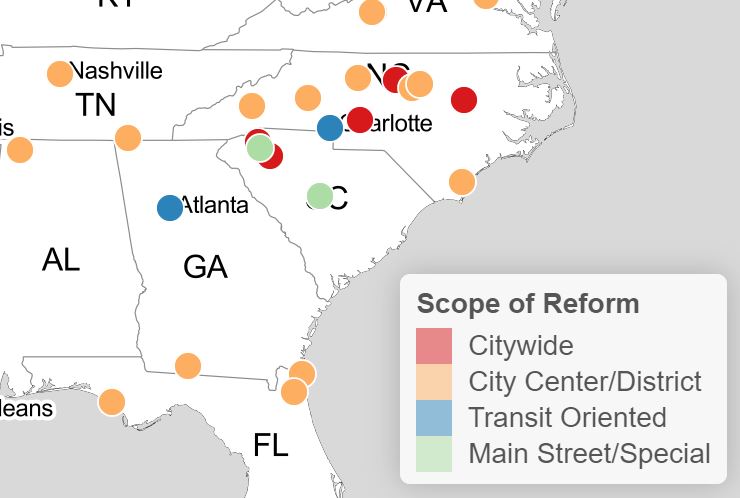Strong Towns, in collaboration with the The Parking Reform Network, has recently released a crowdsourced “Parking Reform Map” that effectively highlights cities and towns with “reformed” parking regulations throughout the U.S.
The map, which can be found on both organization’s respective websites (see below), recognizes that parking minimums — local laws that require “x” number of off-street parking spaces to accompany a building or facility — have been pretty costly for U.S. citizens.
And, according to the Parking Reform Network, these requirements have not only been financially costly, but they’ve physically shaped our cities — altering our way of life and causing extremely negative socioeconomic disparity.
“Over the last century, these costly requirements have contributed to urban sprawl, lack of abundant and affordable housing, car dependency, and climate change.”
The map, however, is trying to change. By highlighting areas that have implemented reforms to such mandates, the issue has been brought to a new level of awareness and participation, one that’s intended to spark conversation and engage a wider audience — it’s quite the accomplishment considering the difficulty in tracking down individual codes, regulations, and laws found throughout the U.S.
“Part of the reason we did this is that the parking reform movement itself has made leaps and bounds in just a few years. It was just four short years ago that Hartford, Connecticut, and Buffalo, New York, became the first major North American cities to completely abolish parking requirements. Since then, the likes of San Francisco, Minneapolis, Edmonton, and South Bend have followed suit—but also dozens if not hundreds of smaller cities and towns. In fact, the terrain has shifted so quickly that the original map, despite a steady stream of user submissions, was becoming an inadequate resource to track these reforms in detail.”
Full Article: Announcing a New and Improved Map of Cities That Have Removed Parking Minimums by author Daniel Herriges; original article published on November 22, 2021.
Map Location: Parking Reform Network: Parking Mandates Map
